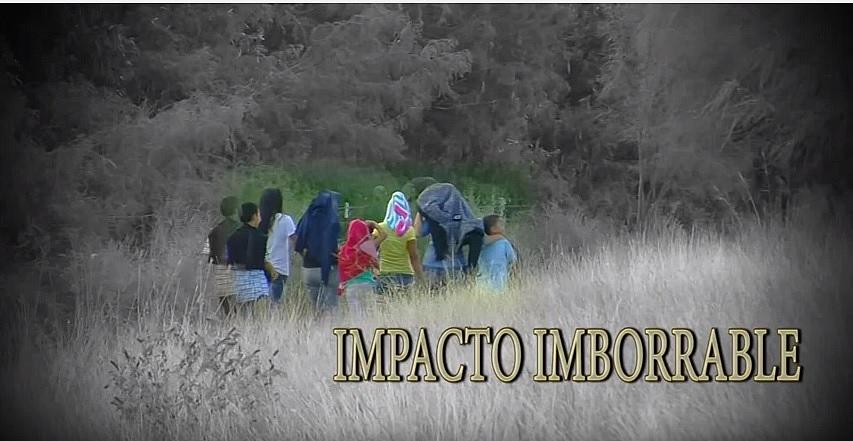'Indelible Impact' — Part I
Karen Falla is a news reporter currently working for Univision, Channel 23 in Dallas, Texas. She covers diverse issues that affect the Hispanic community from immigration to health and education. This project was reported as a project for the 2015 National Health Journalism Fellowship.
Other parts of this series include:

ANCHORS:
It is well known that an unprecedented number of immigrant children arrived in the U.S in 2014, and many of them are here to stay.
Some of them now suffer emotional problems that could mark them for the rest of their lives, as Karen Falla explains in the first part of her special series, “Indelible Impact.”
TITLE: ‘INDELIBLE IMPACT’
UNIDENTIFIED MALE VOICE:
“It was my only way out, to get caught by immigration (authorities).”
REPORTER:
It’s no mystery that, for years, unaccompanied immigrant children, the so-called “children of the border,” have crossed their own countries’ borders, gone through Mexico and stepped into the country they see as an escape from their problems, the United States.
MALE ADULT VOICE:
Where you afraid?
MALE CHILD VOICE:
Yes.
REPORTER:
These minors flee El Salvador, Guatemala and Honduras to avoid the violence that punishes their communities.
SAMUEL, HONDURAN IMMIGRANT
“Sometimes I would be playing outside and they would show up and kill someone, they would get off a car and shoot them dead.”
REPORTER:
They also flee to gain a better financial situation or simply to reunite with parents they have not seen since they were very small.
(UNIDENTIFIED) JUAN CARLOS, HONDURAN IMMIGRANT:
“I was 3 or 4 when she left.”
(UNIDENTIFIED, BLURRED FACE) JENNIFER, CHILD IMMIGRANT FROM EL SALVADOR:
“My mom left me when I was 2 and when I saw her again, it had been 11 years without seeing each other. She was unknown to me, totally unknown.”
REPORTER:
The US southern border registered a significant increase in the number of crossings by unaccompanied minors in Fiscal 2014.
According to Customs and Border Protection statistics, the agency detained 66,115 children and teens. It was then, and facing those unprecedented numbers, President Obama declared we were facing a humanitarian crisis.
CLAY JENKINS, DALLAS COUNTY JUDGE:
"We travelled to McAllen and saw the children from a foot away, spoke to some of the children… it was a sobering and heartbreaking experience because you had children separated into groups by those who had lice, and those who did not.”
REPORTER:
Dallas County Jude Clay Jenkins appealed to local leaders and volunteers to provide shelter to 2,000 children in detention centers, but the stigma had already hit and there was opposition to the plan.
(UNIDENTIFIED) RAY MYERS, KAUFMAN COUNTY TEA PARTY PRESIDENT:
"There could be a disease that we have no control over, that we don’t know about… coming from a child who has been infected somewhere, that he or she didn't even know about, and he could be sitting in a classroom in our schools next to our children."
REPORTER:
A year later, nevertheless, the “children of the border” have found resources and reunited with their relatives and, even though many have pending immigration audiences, a great amount has benefitted from the “Justice AmeriCorps” federal program.
JAIME TREVIÑO, IMMIGRATION LAWYER FROM CATHOLIC CHARITIES:
“It's a program that was established by the U.S. government to provide help to those minors who have pending cases in immigration courts. As a result, we have three attorneys and two assistants on top of the rest of the attorneys that currently work at Catholic Charities.”
REPORTER:
But even when the legal status of these children and teens has been partially resolved, there's something in them that seems to have no resolution.
(BLURRED FACE) JENNIFER, CHILD IMMIGRANT FROM EL SALVADOR:
“I feel such a deep pain that my mother was not by my side all that time.”
JUAN CARLOS, HONDURAN IMMIGRANT:
“It's extremely cold, freezing cold, you are not taken outside, you are locked up and you do not see sunlight.“
REPORTER:
The loneliness, the journey North, the confinement and the adjustment to a new reality produce in a psychological trauma that represents a challenge for these children, their families and the community.
In part two of this story, these unaccompanied minors tell us in detail about the traumatic events that have affected them.
[This story was originally published by Univision.]

